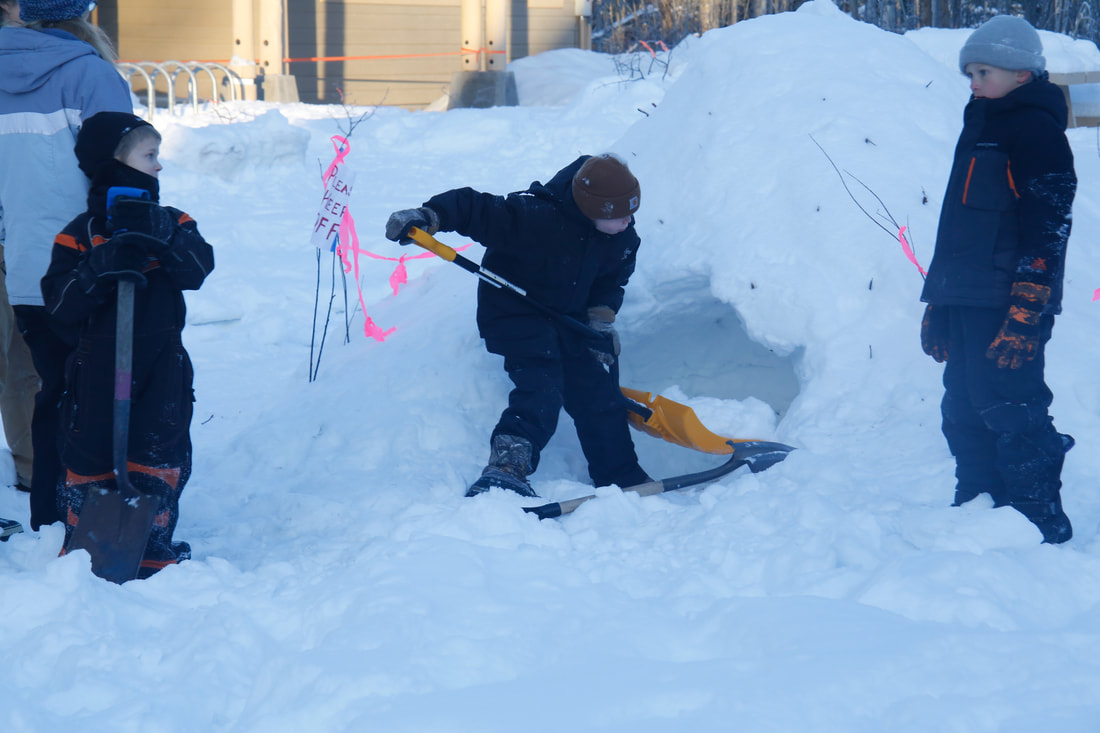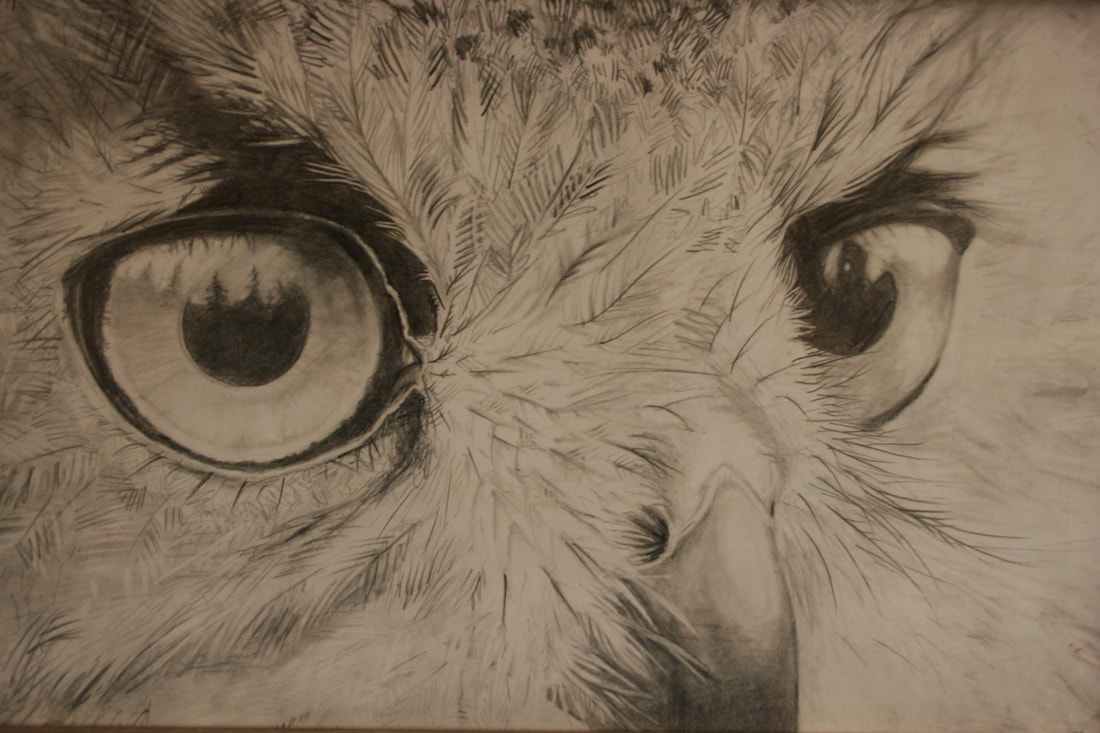|
Copper River Record January 25, 2018 By Robin Mayo Alaskan kids (and adults) are snowman deprived. Except for a few rare days, our snow is too cold and dry to stick together, so rolling or packing snowballs just doesn’t work. If you’d like to create something with the awesome quantities of white stuff we are now enjoying, why not make a quinzee? A quinzee (Kwin-zee) is a snow cave dug out of a mound of snow. Unlike an igloo, which requires very hard packed snow which can be cut into blocks, a quinzee can be made with almost any snow. In temperatures above 25F they don’t work as well, and run the risk of collapsing. A quick search for the origin of the word gave mixed stories, but it appears to be of Athabaskan origin, and native peoples all over the snow-covered parts of the world have used similar structures for temporary shelter. As well as snow, you will want a dozen or more slender sticks, about a foot long, to help gauge the thickness of the walls and roof. Willow shoots, thin branches, shishkabob skewers, or broomstraws work well. Shovels in a variety of sizes and large metal bowls serve well for the digging. A jacket with a hood is highly recommended to avoid snow down the back of your neck while hollowing inside. Start with a patch of un-trampled snow at least 20’ in diameter. Pile the snow in the center, to make a pile at least 5’ high, and 10’ or more in diameter. Picture the size of cave you want inside, with walls and roof at least a foot thick. Make it big enough for a couple of people to sleep in, because you will want to try it out! I’m often asked if a snow cave can be made in a pile that was made by a snowplow or loader. The answer is yes, but they can be uneven texture and hard to dig. When backcountry camping or in a survival situation, look around for a drift that is hard enough on the surface to hold together, and deep enough to allow a cave underneath. Round the top, and pack the final layer of snow by patting it with the backs of the shovels. Shove the sticks straight in evenly spaced around the roof and walls. When you dig from the inside, you will know how thick the walls are when you find the end of a stick. Now comes the magic aka SCIENCE! Let the pile set for a few hours, or overnight. The disturbed snow will “sinter,” bonding to the snow around it and hardening. Now you can dig in, carefully hollowing out the inside with shovels. Once you are fully inside, it can be awkward to dig in the confined space, so try a small avalanche shovel with telescoping handle, or a large mixing bowl. If you want to sleep in the quinzee, it’s a good idea to leave two bunks about a foot thick, with a trench in between. You can sit on the bunks with your feet in the trench, and cold air will drain out. Be sure to poke several breathing/ventilation holes. You can block the entrance with a snow block or backpack, but be sure to leave cracks for ventilation. Just from body heat, it can get warm enough to melt the inside and start dripping. For safety, don’t let anyone climb on the quinzee, especially if there is someone inside. If we are building one in a public place or with a group, I like to put up some sticks, flagging tape, and signs to remind everyone. If the weather warms above freezing, don’t go in a quinzee as there is a risk of collapse. In a stable winter in the Copper Valley you can enjoy a quinzee in your yard for months before it finally surrenders to spring. At Winter Fun Day in December, the hard work of hollowing out the Quinzee begins. You can see the ends of the sticks which will help gauge the thickness of the walls. Paul Boos Photo
0 Comments
|
Who We AreWISEfriends are several writers connected with Wrangell Institute for Science and Environment, a nonprofit organization located in Alaska's Copper River Valley. Most of these articles originally appeared in our local newspaper, the Copper River Record. Archives
August 2021
Categories
All
|
|
WISE is a
501(c)3 nonprofit organization |
Contact Us |



 RSS Feed
RSS Feed
